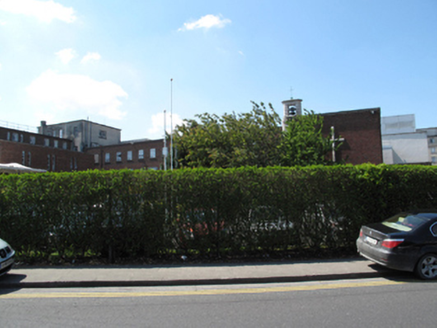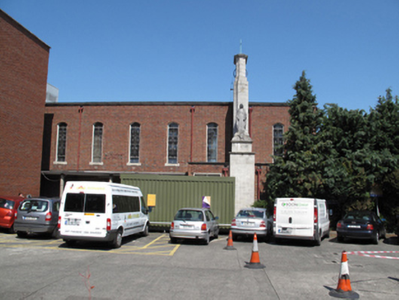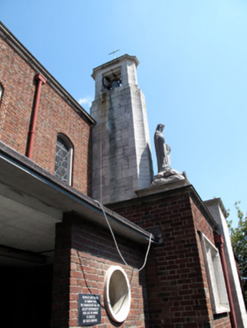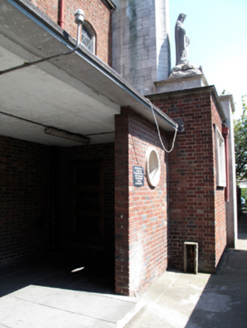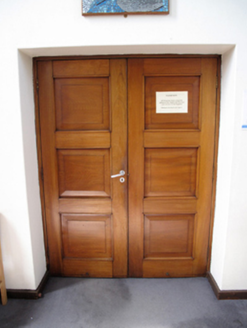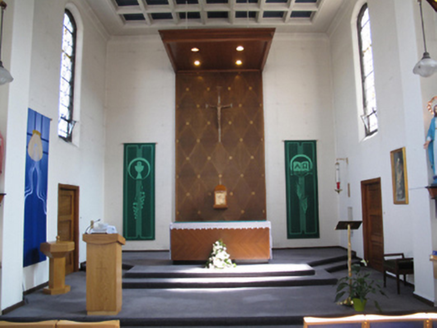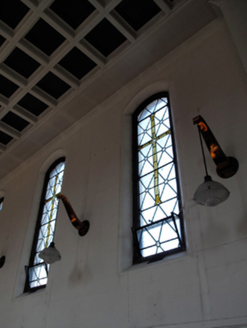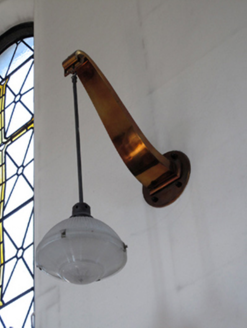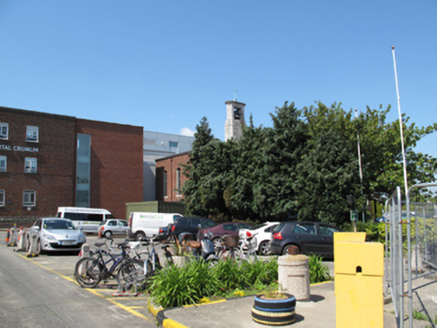Survey Data
Reg No
50080187
Rating
Regional
Categories of Special Interest
Architectural, Artistic, Social
Original Use
Church/chapel
In Use As
Church/chapel
Date
1955 - 1965
Coordinates
312120, 232011
Date Recorded
30/05/2013
Date Updated
--/--/--
Description
Attached rectangular-plan double-height Roman Catholic chapel, built 1960, attached at west (entrance) end to hospital building, having flat-roofed sacristy, prayer niche and canopy to south elevation, prayer niche and office to north elevation. Flat roofs, having carved masonry coping and cast-iron rainwater goods. Carved limestone bell tower to south elevation, having metal cross finial and bell, carved statue to podium. Red brick walls laid in Flemish bond having cut stone cross to east end. Segmental-headed windows to nave having chamfered concrete surrounds and leaded stained glass, square-headed windows to sacristy and office, having concrete surrounds and leaded glass. Unglazed circular opening to sacristy porch. Square-headed door openings having timber panelled doors. Interior with altar to east having timber altar furniture, and later full-height timber wall panel. Coffered ceilings, recessed prayer niches, brass wall-mounted lamp holders to nave between window openings. Steps to altar, pilasters to chancel. Set back from the road having metal fence and planted boundary.
Appraisal
This chapel forms part of a large complex of buildings set within the grounds of Our Lady's Children's Hospital, Crumlin. The restrained architectural language of the building is typical of mid-twentieth-century design, and the understated interior and elevated window composition contribute to a calm and luminous interior. The cut stone detailing to the bell tower, the stained glass windows, and the brass lamp holders to the interior are features of particular note and add aesthetic appeal. The quality of materials, and composition and scale of the space, create a pleasing design, making a positive architectural contribution to the hospital. In active use by the hospital staff and patients, it contributes to the social character of the complex.
